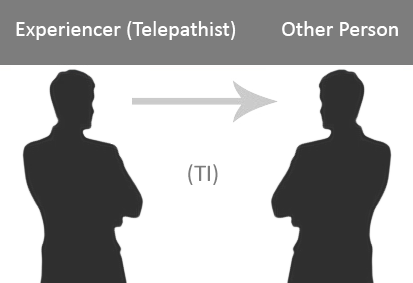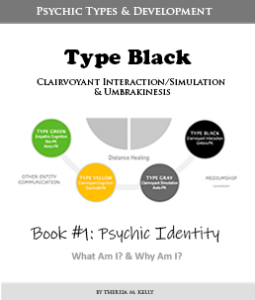- What Am I? (Type Red)
- Psychic “Ability” (Type Red)
- Psi, ESP, & Clairvoyance (Type Red)
- Dreams, Impressions, & Hallucinations (Type Red)
- Telepathic Interaction (Type Red)
TELEPATHIC INTERACTION
The two main types of extrasensory perception talked about before, telepathy and clairvoyance, may seem somewhat similar too, but are actually quite different. Telepathy involves a connection and influence between two minds, while clairvoyance involves a connection and influence between the state of a physical object, person, or situation to a mind. This means that nature, or the universe, as a whole is always aware of the physical state of affairs, which in turn communicates such information to a mind. It helps if you think of the universe as one big computer or living brain that is aware, can think, and can form memories.
This difference between telepathy and clairvoyance is taken to be a difference between two forms of experiences. The goal of telepathic experiences is assumed to involve a person’s thoughts or mental states (example: how a person feels, thinks). In contrast, the goal of clairvoyant experiences is assumed to involve a physical situation or event that may or may not include other people.
This is viewed as telepathy being “direct,” since it involves a direct connection between two minds; whereas, clairvoyance is viewed as “indirect,” because it only results in finding out about the physical situation of a thing or person, rather than directly finding out about a person through the person them self.
There are three sub-types of Telepathy:
- Telepathic Cognition(TC) applies whenever information is telepathically received by the experiencer from person.
- Telepathic Interaction(TI) applies whenever information is telepathically received by a person from the experiencer.
- Telepathic Simulation(TS) applies whenever information is telepathically shared between the experiencer and a person
 The main feature of Telepathic Interaction is the influence of one mind on another without the use of the five senses. In cases of telepathic interaction, experiencers of telepathic interaction appear to do so through commands that are based on the experiencer’s subconscious need to have another person feel or behave in a particular way.
The main feature of Telepathic Interaction is the influence of one mind on another without the use of the five senses. In cases of telepathic interaction, experiencers of telepathic interaction appear to do so through commands that are based on the experiencer’s subconscious need to have another person feel or behave in a particular way.
 However, it appears that “hypnogenic interaction” is involved in a manner causing a mild hypnotic state in the other person through the experiencers command or intention. This is without the experiencer having to mentally produce any feelings like a hypnotic state within him/herself.
However, it appears that “hypnogenic interaction” is involved in a manner causing a mild hypnotic state in the other person through the experiencers command or intention. This is without the experiencer having to mentally produce any feelings like a hypnotic state within him/herself.
In other words, the experiencer does not have to be in a hypnotic state to create a hypnotic state in another. This is because with telepathic interaction telepathic information is sent, not shared.
This method of telepathic interaction is also classified as “hypnotic telepathic interaction” or “hypnotic telepathy”, which appears to not only bring out strong emotions in the other person, but it also usually results in an action on the other persons behalf more often than the method where the experiencer is simply “commanding” an act. In these cases, the hypnotic state is caused before the command is sent.
 Therefore, hypnotic telepathic interaction appears to be the strongest form of telepathy and the most DANGEROUS, whereby raising a mixed group of moral and ethical questions as to how such an ability should be used in practical ways.
Therefore, hypnotic telepathic interaction appears to be the strongest form of telepathy and the most DANGEROUS, whereby raising a mixed group of moral and ethical questions as to how such an ability should be used in practical ways.
Further studies have suggested that initial telepathic “impressions”, such as commands and suggested emotions, do not always fade away with time. Rather, some initial impressions result in the same strength of emotions or “need to act” anytime the other person sees the experiencer, either through memory or physically, or the other person experiences like emotions similar to the emotions first suggested by the experiencer.
 These can include feelings of obsession, which is often misunderstood as love, and may be triggered by the other person when they mentally think about the experiencer, see the experiencer physically, or simply think about other loved ones (a similar emotion).
These can include feelings of obsession, which is often misunderstood as love, and may be triggered by the other person when they mentally think about the experiencer, see the experiencer physically, or simply think about other loved ones (a similar emotion).








